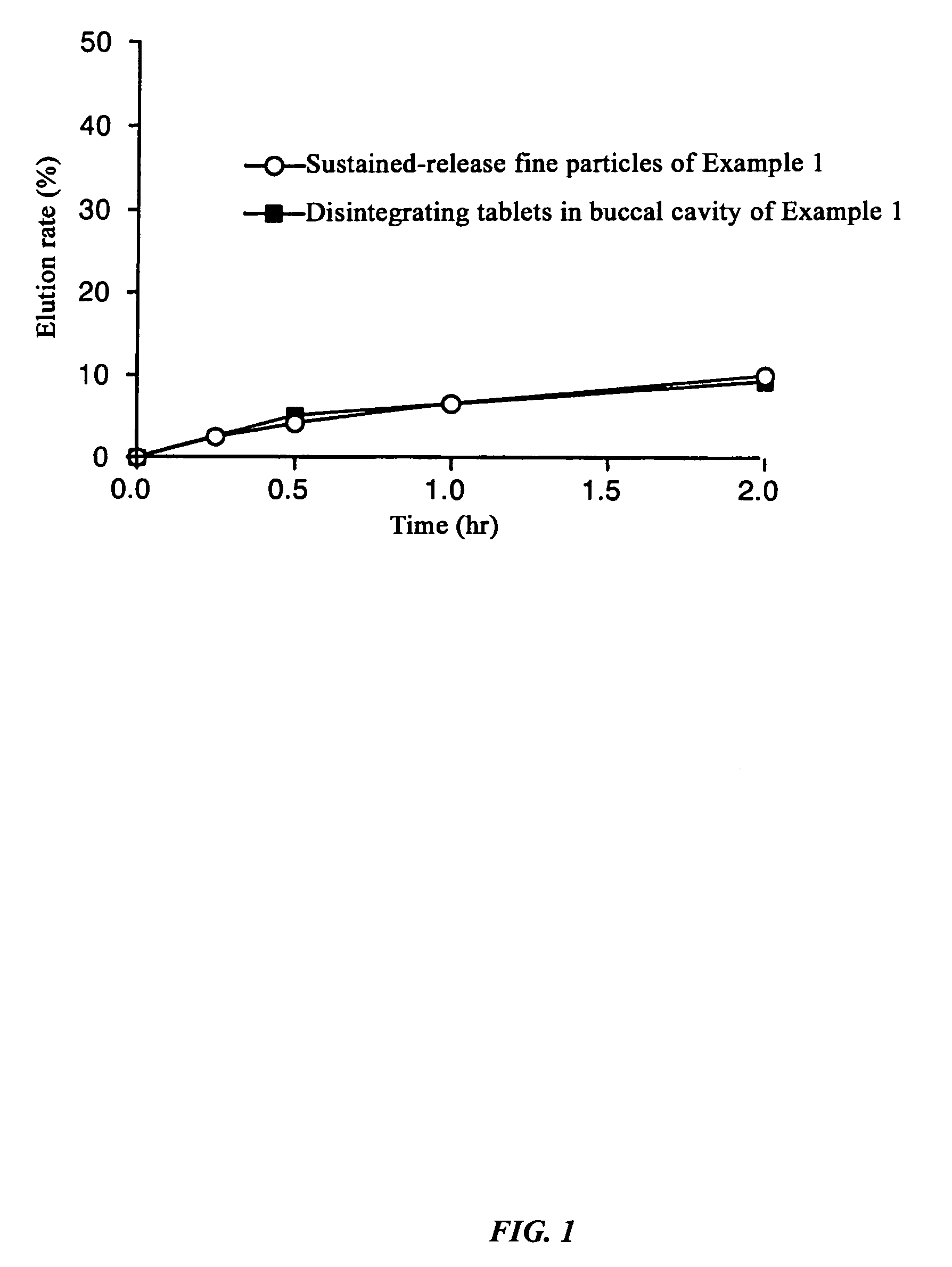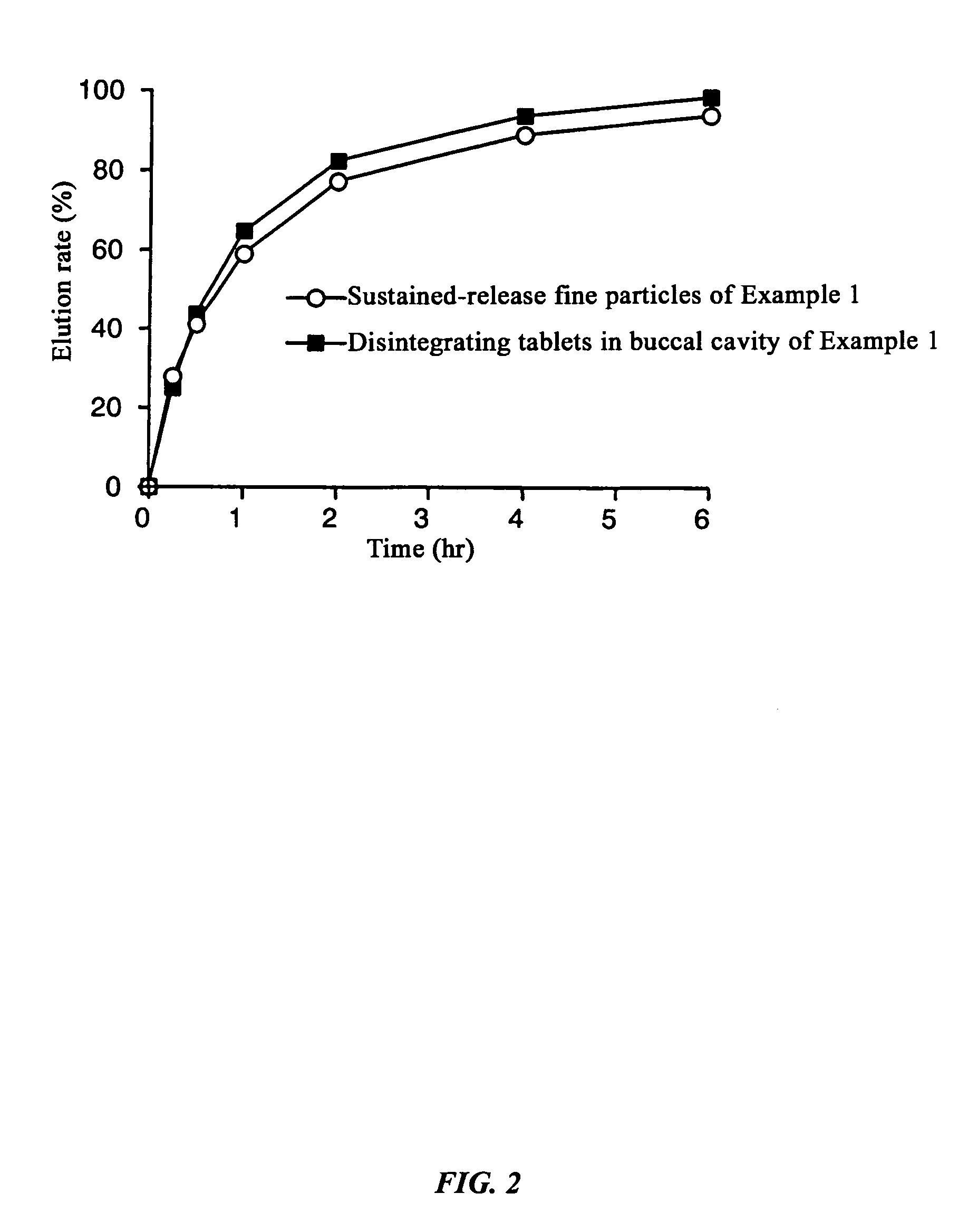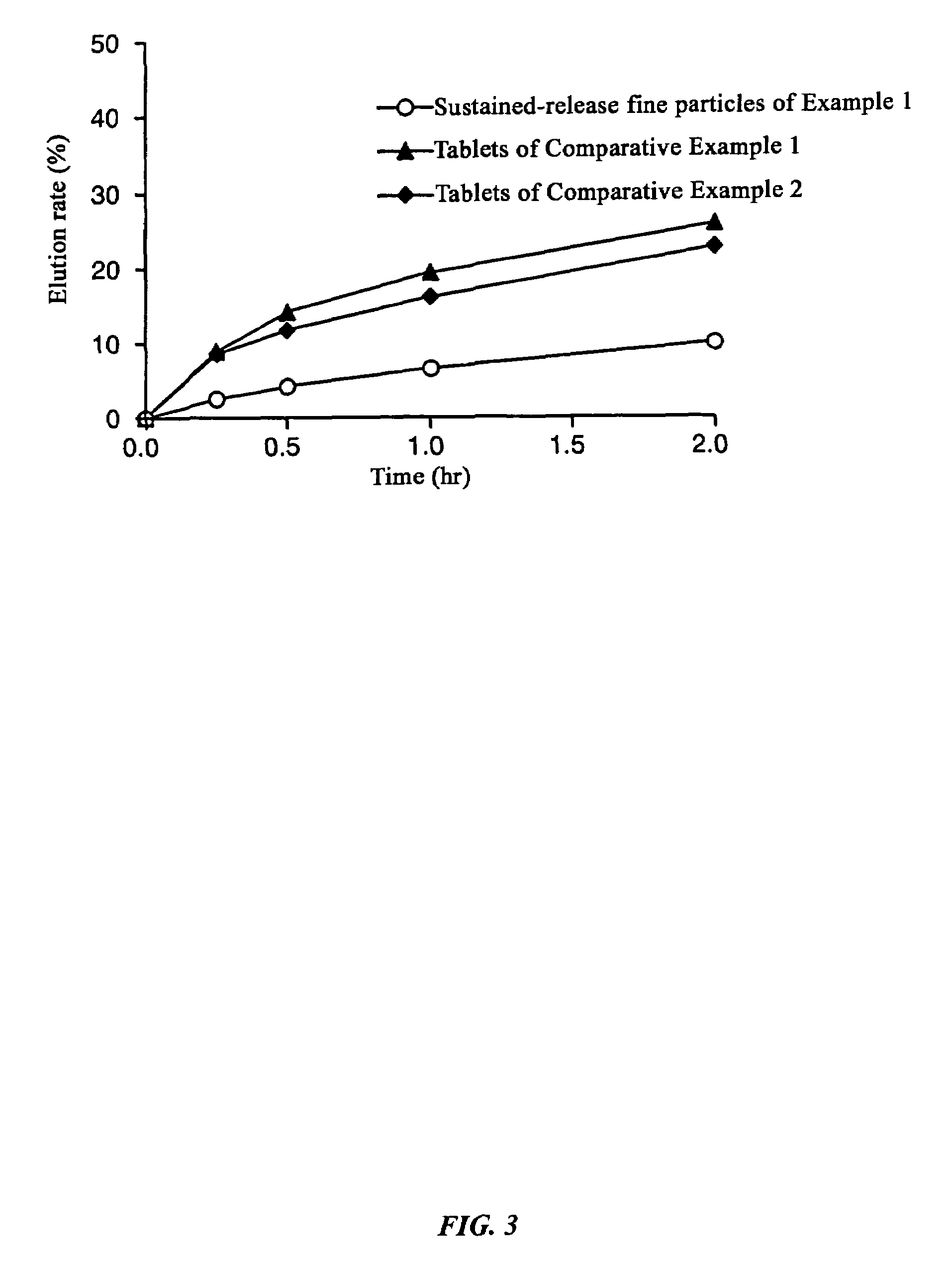Composition comprises sustained-release fine particles and manufacturing method thereof
a technology of fine particles and manufacturing methods, applied in the direction of biocide, drug compositions, animal repellents, etc., to achieve the effect of neutralizing pressure during tableting, and preventing segregation of sustained-release fine particles and fillers
- Summary
- Abstract
- Description
- Claims
- Application Information
AI Technical Summary
Benefits of technology
Problems solved by technology
Method used
Image
Examples
example 1
[0107]Eighty grams tamsulosin hydrochloride and 80 g hydroxypropylmethyl cellulose (TC5E, Shin-Etsu Chemical Co., Ltd.) were dissolved in a mixture of 304 g purified water and 2,736 g methanol. Four-thousand grams Celphere 102 (brand name, Asahi Kasei, mean particle diameter of approximately 127 μm, particle diameter of approximately 50 to approximately 150 μm) were introduced to a fluidized bed granulator (Freund Industries, FLO-5) and coated with this solution by the side spraying method (spraying liquid volume 100 g / min, spraying air pressure 4 kg / cm2, product temperature 40° C., inlet temperature 80° C.) to obtain tamsulosin hydrochloride particles. Separately, 533 g ethyl cellulose (Nissin Chemistry Co.) and 187 g hydroxypropylmethyl cellulose (TC5E, brand name, Shin-Etsu Chemical Co., Ltd.) were dissolved in a mixture of 698 g purified water and 22,582 g methanol. Four thousand grams tamsulosin hydrochloride particles were introduced to a fluidized bed granulator (Freund Indus...
experiment 1 (
Quantitative Amount by Particle Diameter Distribution)
[0112]The particle diameter distribution of the sustained-release fine particles obtained in Example 1 and the particle diameter distribution as well as quantitative distribution by particle diameter of the composition prepared in Examples 1 and 2 (Table 1) as well as the product prepared in Comparative Examples 1 and 2 (Table 2) are shown together.
[0113]
TABLE 1Particle diameter distribution of sustained release fine particles and particle diameter distributionand quantitative distribution by particle diameter of compositions of Examples 1 and 2ParticleQuantitativeQuantitativediameterParticledistributionParticledistributiondistributiondiameterby particlediameterby particleof sustained-distributiondiameter ofdistributiondiameter ofrelease fineof Example 1Example 1of Example 2Example 2particlescompositioncompositioncompositioncompositionMean particle165393—204—diameter (μm) 30 Mesh on (%)026.919.01.51.1 42 Mesh on (%)029.722.45.16....
experiment 2 (
Dissolution Experiment)
[0117]Dissolution experiments were performed on the tablets obtained in Example 1 and Comparative Examples 1 and 2 and the results were compared with the dissolution speed of sustained-release fine particles only. The experimental conditions were 100 rpm by the paddle method, and 500 ml each of Japanese Pharmacopoeia Disintegration Test Method 1st fluid (pH 1.2) and 2nd fluid (pH 6.8) were used as the experimental fluids.
[0118]As a result of the experiment, in the Example there was almost no difference (difference in values after two hours of 0.7%) between the dissolution rate of the sustained-release fine particles and tablets up to two hours after starting the dissolution experiment with the test fluid having a pH of 1.2, and even with the test fluid having a pH of 6.8, the difference between the dissolution rate of the sustained-release fine particles and tablet was always less than 15% at 2.9%, 5.8%, and 5.1% at each dissolution time where the dissolution ...
PUM
| Property | Measurement | Unit |
|---|---|---|
| Fraction | aaaaa | aaaaa |
| Fraction | aaaaa | aaaaa |
| Fraction | aaaaa | aaaaa |
Abstract
Description
Claims
Application Information
 Login to View More
Login to View More - R&D
- Intellectual Property
- Life Sciences
- Materials
- Tech Scout
- Unparalleled Data Quality
- Higher Quality Content
- 60% Fewer Hallucinations
Browse by: Latest US Patents, China's latest patents, Technical Efficacy Thesaurus, Application Domain, Technology Topic, Popular Technical Reports.
© 2025 PatSnap. All rights reserved.Legal|Privacy policy|Modern Slavery Act Transparency Statement|Sitemap|About US| Contact US: help@patsnap.com



